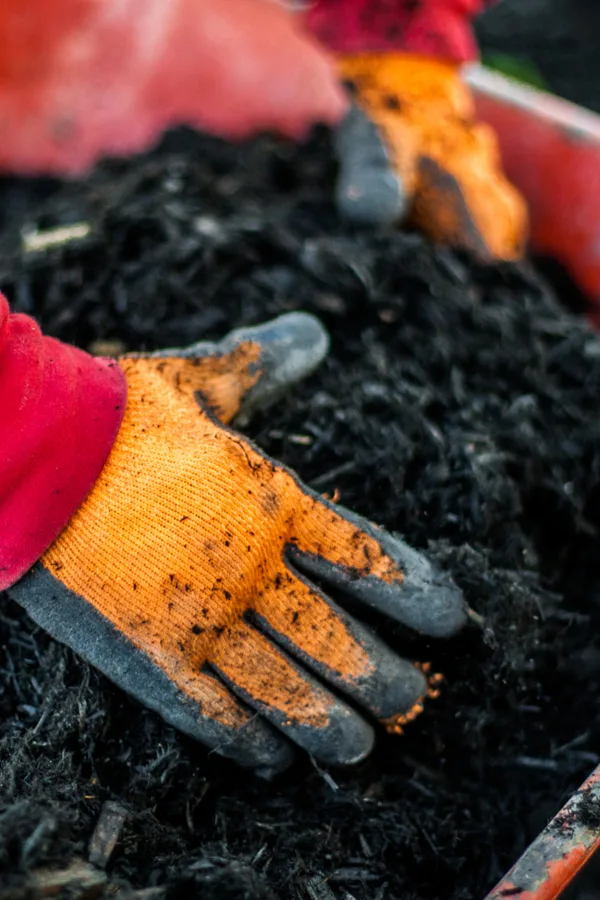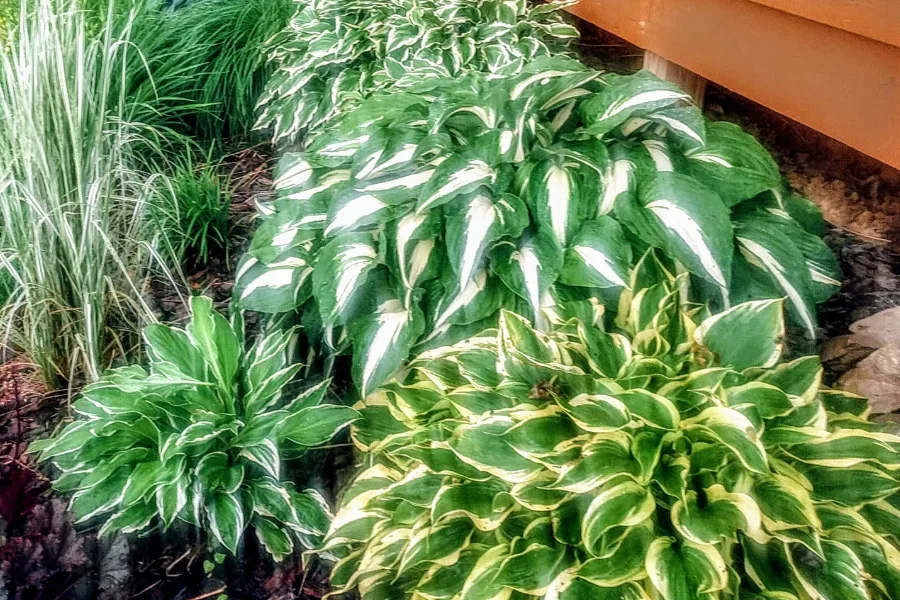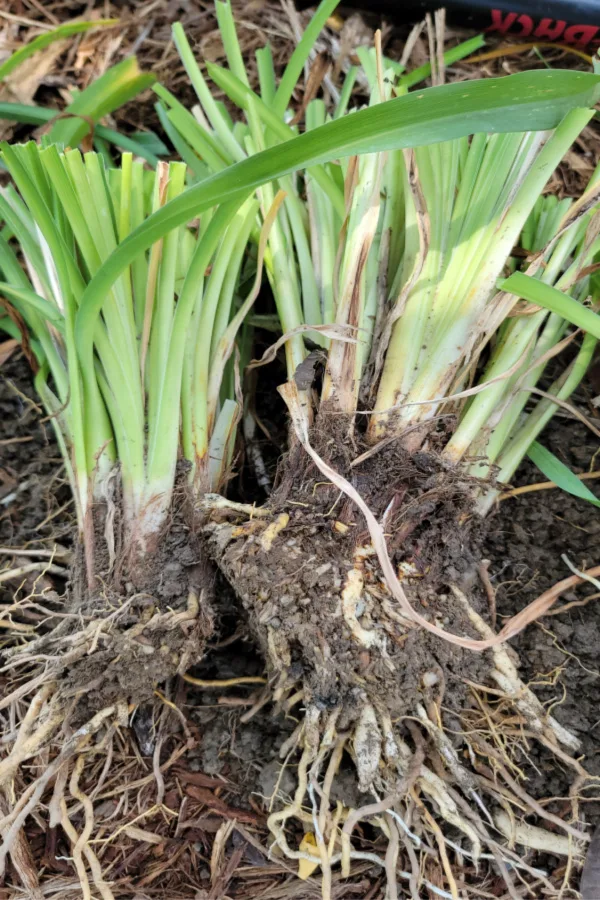Are you tired of battling weeds in your flowerbeds over and over every spring, summer and fall in your garden – and looking for a way to eliminate those weeds and the chore of weeding once and for all? Well, you can. And all with just two little secrets to flowerbed maintenance!
There is little doubt that keeping the flowerbeds around your home free of weeds can be frustrating and exhausting all at the same time. Especially when they seem to come back quicker than ever right after you just weeded them!
For many gardeners, by mid to late summer, they just can’t keep up and finally give up. But of course – all while vowing that without a doubt – next year will be the year they tackle the weeds in their flowerbeds for good!

We’ve all been there. But the good news is there really are a few simple secrets that can end your flowerbed weeds not just this year – but for good. Even better, you can do so without constantly having to be in your flowerbeds for hours pulling weeds to do so.
We can honestly say that with confidence – and from personal experience. The two tips we cover in today’s article have worked incredibly well to keep all of our flowerbeds at the farm weed free for almost 15 years now. And best of all, they help us to work less and have a lot more time to actually enjoy the flowers!
2 Simple Secrets To Eliminate Weeds In Your Flowerbeds – And The Need To Constantly Weed!
1) The Best Way To Use Mulch To Stop Weeds
More than anything else, if gardeners make one mistake with mulch, it’s failing to put down enough to do the job. Placing down an inch or two of mulch around perennials, annuals and shrubs is simply not enough to keep out weeds.
It won’t keep weed seeds buried in the soil below from germinating – and it certainly won’t keep seeds that blow in from finding a way down into the soil to sprout and grow.

Mulch in flowerbeds should be kept at a minimum depth of four inches. We actually mulch our beds at six inches in depth. Mulch should be put down thick initially as a single, heavy coat. By applying it heavier from the start, you can both suppress existing weeds and keep new seeds from going to the soil below.
This doesn’t mean you can’t add mulch later if needed. But it’s important to start your beds off right with the protection they need. It will decrease your weeding chores significantly, not just in the spring, but into the summer and fall as well.
Avoid Weed Barriers & Cloth – 2 Simple Secrets To Eliminate Weeds In Your Flowerbeds
So you might be asking, what if I use weed barrier cloth? Unfortunately, weed barrier cloth almost always ends up creating more work than it saves. Especially in a year or two when weeds begin forming above the cloth in the decomposing mulch. In fact, once weeds begin to weave through the fabric, they are even more difficult to get out than before.
But there are other issues with weed barrier cloth as well. It can also hinder plant growth and plant health over time. Although weed barrier cloth does allow moisture through, it can easily become filled with decaying matter that blocks water and nutrients from easily passing through.
Instead, use a deep covering of a good hardwood or bark mulch that can protect your soil and allow nutrients and water to get to the roots of your plants. And once you get that mulch down – most important of all – leave it alone!
Listen In To Our Podcast Below On Eliminating Flowerbed Weeds
Leave That Mulch Alone! 2 Simple Secrets To Eliminate Weeds In Your Flowerbeds
Many gardeners like to stir up faded mulch every week or two to freshen up the look of their beds. Unfortunately, every time mulch is raked and turned, weed seeds are turned under towards the soil and “planted” as well.
On the surface, the seeds have little ability to germinate. But once turned under, they can easily find the soil they need to sprout. And the next round of weeds begins.
In addition, don’t till or excessively dig beds in the spring before planting. This only serves to plant more weeds too. Instead, create planting holes that are only the size needed, and leave the rest of the soil undisturbed. And speaking of planting – that leads right into perhaps the most important secret of all to eliminate weeds – filling your flowerbeds with more plants than mulch!
2) Filling Flowerbeds With Plants – 2 Simple Secrets To Eliminate Weeds In Your Flowerbeds
When most gardeners think about stopping weeds, they first think of mulch and using weed barriers or weed killing products.
Mulch is certainly a vital player when it comes to keeping beds neat, tidy and weed free. But it is just one of the two biggest keys to success. As it turns out, fighting weeds and the chore of weeding really begins with planting more plants and flowers!
The number one key to keeping flowerbeds weed free is to fill your flowerbeds full of plants – and not just mulch. Think of it as planting a living weed-barrier. Mulch is a filler and should be treated that way. One thing is for sure, it should never be the most visible or used material in your flowerbeds. Instead, that honor should always go to your plants.
Unfortunately, flowerbeds usually have way more area dedicated to mulch than plants. And when that is the case, all of that open mulch space becomes an easy target for weeds to establish. Plain and simple – the more open space in your beds, the more weeding chores you will always have!
Why Plants Are The Key To Success – 2 Simple Secrets To Eliminate Weeds In Your Flowerbeds
Instead of mulch, fill your beds with perennials, annuals, and more. Plant small shrubs and bushes to help fill open voids. By allowing plants to grow together, it eliminates wide open spaces. And those spaces are exactly where weeds and weed seeds will find a home.
Planting your plants close together has other benefits for your flowerbeds as well. The thicker the covering of foliage, the less likely the soil is to dry out in the summer. That, of course, means less watering chores – saving even more time for you to simply enjoy your flowers.
Perhaps best of all, planting thick saves enormously on purchasing mulch. And the time it takes you to spread that mulch too. And before you start thinking that buying more plants can be costly – remember that by simply dividing the plants you already have each year, you can pack your flowerbeds almost for free.
Dividing & Transplanting To Fill Flowerbeds – 2 Simple Secrets To Eliminate Weeds In Your Flowerbeds
Spring and Fall are great times to divide and split the perennials in your landscape. And with some plants such as daylilies and hostas, you can even dig and transplant in the middle of summer. But don’t stop there, you can also swap starts of plants with friends, family and neighbors too. See our article: Summer Hosta Care
By simply using starts from existing perennials and dividing, we have already created hundreds and hundreds of plants for our new farm – all for free.
And one last tip – when starting bed spaces, always start them small. It’s easy to pack small beds full of plants. And as you can divide, then simply expand your bed space as you do. Here is to using two simple secrets to eliminate the weeds in your flowerbeds this year – and in the future too! Happy Gardening – Jim and Mary.
Old World Garden
Jim and Mary Competti have been writing gardening, DIY and recipe articles and books for over 15 years from their 46 acre Ohio farm. The two are frequent speakers on all things gardening and love to travel in their spare time.
As always, feel free to email us at thefarm@owgarden.com with comments, questions, or to simply say hello! You can sign up for our free email list in the subscribe now box in the middle of this article. Follow us on Facebook here : OWG Facebook. This article may contain affiliate links.


